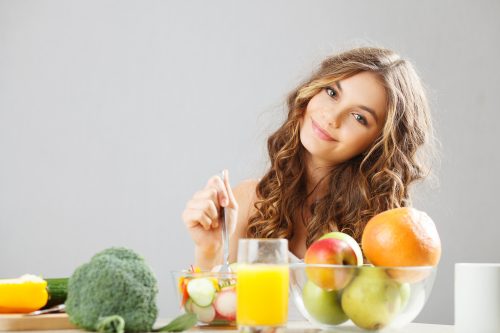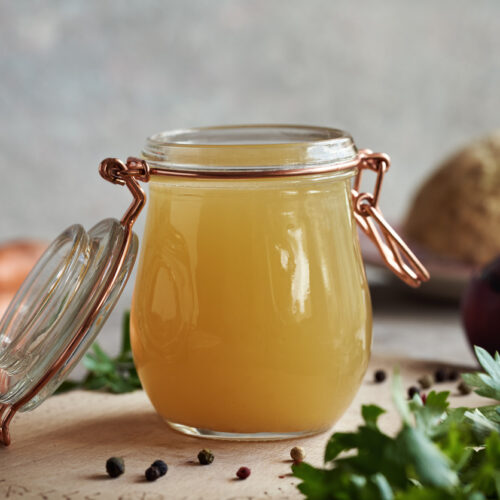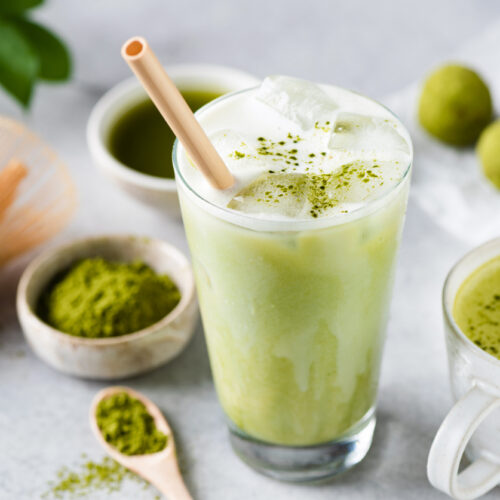
Whether for health or ideological reasons, many teenagers decide to stop eating meat. Here’s how to ensure your teen has a healthy, balanced diet – without compromising their ideals.
Being vegetarian is common among teenage girls these days. According to the 1997 National Nutrition Survey, about 13% of girls aged 15-18 years call themselves vegetarian. Although not as common as the girls, teenage boys and men aged 15-24 years were the most likely among males to eat some type of vegetarian diet. And for some of these teenagers it will become a lifelong decision.
16-year-old Sarah decided about 15 months ago to become a vegetarian for ideological reasons – she is acutely concerned about animal welfare. Then nine months ago, Sarah went a step further and became a vegan – now she doesn’t eat any animal products at all. Sarah is expected to prepare her own meals in the evening, often opting for pasta or noodles with tofu and vegetables. A casual takeaway with friends is not simple either.
Being a vegetarian, let alone a vegan, is not an easy choice for anyone. It’s not just a matter of removing meat from your meals. A plate of vegetables or salad doesn’t make a balanced meal and will be missing protein and other nutrients needed for proper growth and development. But armed with the right information, vegetarians can enjoy a healthy, balanced diet, and both teens and their parents can work together to make their special needs fit in with the family’s eating habits.
First steps
When your teen first announces her new diet, sit down with her and flip through a vegetarian cookbook. It’s a good way to introduce legumes, grains and soy products such as tofu and tempeh – if your teen is not eating meat, she will need to eat more of these foods. It’s also a good way to make your teen understand it’s not just about giving up certain foods, it’s also about buying and preparing new types of foods.
If your teen chooses to become vegan, she’ll need to see a dietitian to discuss if any supplements are needed. For example, if she stops drinking milk, she’ll need to drink a calcium-fortified soy milk or take a calcium supplement.
A one- or two-week trial period before making a public commitment to vegetarianism is a great idea and you could start by taking your teen out for a vegetarian meal to discuss it further. You could also suggest a gradual conversion. Start off eating more vegetables and smaller meat serves.
Once your teen is fully committed to vegetarianism, for the sake of family harmony, ask all members not to make negative remarks about each other’s eating habits while at the dinner table.
Guide to the basic foods
There are three key issues to consider in a vegetarian diet:
- Getting enough kilojoules for growth, as teens are still finishing their final growth phase.
- Getting enough protein to build new muscles and tissues.
- Avoiding vitamin and mineral deficiencies.
Each day you need to eat the following minimum quantities of the various food groups.
Grains: at least 6 serves of rice, pasta, couscous, bulgar, bread, noodles, cereal or oats. A serve means 1/2 cup cooked grain or 1 slice of bread; whole grain is best.
Vegetables, salads and sprouts: 5 serves, raw and cooked (a serve is around 1/2 cup of vegetables).
Fruit and juices: 2 serves.
Protein: 2 serves of cooked or canned legumes (a serve means 1/2 cup cooked beans, peas or lentils or 125g tofu or tempeh); or 2 serves of nuts or nutmeat (a serve means 1/4 cup or 30g); or 2 eggs or 40g cheese or 1 tub (200g) yoghurt; or any combination of the above.
Calcium: 600ml milk or calcium-fortified soy drinks; in place of 300ml of milk, you could choose 40g of cheese or 1/2 cup cottage cheese or 300ml buttermilk or 1 tub (200g) yoghurt. If you don’t eat any of these calcium sources, consider a calcium supplement.
Fats and oils: 1 tablespoon (20g) of mono- or polyunsaturated oil, mono-unsaturated spread, tahini, mayonnaise, salad dressing, peanut butter, seeds (sunflower, pumpkin, sesame), avocado or wheat germ.
The fat trap
Many girls become vegetarian because they think it will lead to weight loss – if you munch on vegetables all day, you won’t be consuming much at all. However, many popular vegetarian dishes are high in fat. For example, think of vegetarian lasagne (up to 35g of fat), vegetable laksa with fried tofu cubes (around 36g) and the humble cheese and vege flan (which can pack in 40g). Many other meat-free dishes that are deep-fried in oil, topped with a rich cheese sauce or made with buttery shortcrust pastry are also high in fat.
Going vegetarian can be a smokescreen for anorexia and other eating disorders. Australian research has found an unusually high incidence of vegetarianism among people with eating disorders. Only around 4% of the adult Australian population is vegetarian, however in a study of 116 patients published in the Medical Journal of Australia, over half of patients with anorexia nervosa avoided red meat. “Vegetarianism doesn’t cause eating disorders,” says Sydney University professor of clinical psychiatry Stephen Touyz, one of the study’s authors and co-director of the Peter Beaumont Centre for Eating Disorders at Wesley Private Hospital. “But in the context of obsessive dieting and calorie counting, meat comes under fire.”
Many girls use vegetarian eating for weight control but only a small number develop an eating disorder. However, it’s worth watching out for any changes that lead to them severely restricting food intake or purging after eating.
Nutritional deficiencies
Tiredness and fatigue or lack of energy are the best early warning signs for parents. This indicates your teen could be deficient in iron, vitamin B12 or zinc, the three main and common shortfalls in a vegetarian diet, particularly a vegan diet. Other signs to watch are poor digestion, little or no appetite, nausea or loss of menstruation. Naturally there are other causes for these symptoms so it’s wise to visit your family doctor if any of these occur.
Zinc: Signs of zinc deficiency include slow growth, slow healing of sores and cuts, susceptibility to infections and loss of appetite or an inability to taste. In extreme cases, prolonged zinc deficiency can lead to delayed sexual maturation in boys. Zinc is concentrated in meat, fish, oysters and chicken. For vegetarians, their zinc sources are wholemeal and grain breads, bran and whole grain breakfast cereals, legumes and nuts.
Calcium: This is used to build up bones until early adulthood when peak bone mass is reached. After this time, bone calcium and strength slowly diminish. Not enough calcium in the teenage years can result in fragile bones in old age.
Vitamin B12: This is needed to form red blood cells and maintain a healthy nervous system. Vitamin B12 is mostly found in animal products so vegans will need to take a supplement. Milk can be a good source for vegetarians.
Iron: Vegetarian teenage girls are particularly at risk of iron-deficiency anaemia because red meat is one of the best sources of readily absorbed iron (haem iron). Vegetarian sources include iron-fortified breakfast cereals (check the pack information), dark green vegetables such as spinach, silverbeet or broccoli, dried beans, lentils, meat substitutes such as tofu or soy steaks, dried fruit and cocoa powder. Adding a source of vitamin C (such as fruit, capsicum or tomato) with grains or vegetables will increase iron absorption.
Omega-3: Vegans who consume no animal foods at all may miss out on omega-3 oils from fish and lean meat. Their best option is to take a tablespoon of flaxseed oil a day (it’s good as a salad dressing), sprinkle linseeds (flaxseeds) on cereal and eat omega-3-enriched products (eggs and bread).
If you have a vegetarian at the dinner table…
Keep meat plain and simple for the meat-eaters and jazz up the vegetables instead so you only need to cook one meal. Dress up the vegetables and serve them as a main to your vegetarian teenager, and as a side dish to grilled meat, fish or chicken for the meat-eaters. For example, a pumpkin and chickpea risotto for the vegetarian becomes a tasty accompaniment to lamb steaks for the rest of the family, along with a tossed side salad for everyone.
Talk to the rest of the family about eating a vegetarian meal once or twice a week. Meal times are an important part of family life and eating together builds routine and consistency and encourages teenagers to learn about communication, manners and nutrition. Don’t fall into the trap of feeding your teenage vegetarian at separate times.
Negotiating with your teenager to prepare some vegetarian dishes on the weekend to freeze for meals during the week means your teen learns some cooking skills and it will make it easier for the household chef.
Quiz
Is vegetarian eating for you?
To help you make an informed decision about going vegetarian, ask yourself these questions:
- Do I like the taste of vegetables?
- Do I like legumes (such as baked beans, lentils and chickpeas)?
- Am I prepared to eat meat alternatives (soy steaks, textured vegetable protein (TVP) and tofu burgers or lentil burgers) when everyone else is tucking into meat at a barbecue?
- Am I prepared to plan and shop ahead for proper vegetarian main meals?
- Am I doing this to save animals from being killed?
- Do I want to help the environment by not eating meat?
- Am I doing it because I want to be healthier and not be sick as I get older?
- Am I eating vegetarian because it’s something I believe in and not just because my friends are doing it?
If you answered ‘no’ to any of these questions, you may need to rethink going vegetarian. Remember, there are many ways of eating healthily without giving up meat. Simply eating bigger serves of vegetables and only a little meat at dinner is one way, and it doesn’t mean a huge change in what you cook.
Family-friendly vegetarian options
Breakfast
- High-fibre breakfast cereal/muesli with low-fat milk or calcium-enriched soy milk and dollops of natural yoghurt
- Slice of grainy toast topped with cheese or peanut butter
- Small glass of fruit juice (high in vitamin C)
Lunch and snacks
- Wholemeal sandwich filled with egg, cheese or avocado and plenty of lettuce, cucumber, tomato and sprouts
- Sandwich or wrap with hummus and tabouli, curried egg and salad, cheese and salad or coleslaw
Baked beans - Vegetarian sushi or nori rolls
- Lentil or tofu patties on a wholemeal roll with salad
- Individual vegetable quiches
Dinner
- Minestrone soup
- Chickpea and pasta soup
- Split pea soup
- Red lentil and vegetable soup
- Tofu and vegetable laksa
- Tofu and vegetable stir-fry
- Tofu and cashew nut stir-fry
- Soy sausage and vege pasta
- Lentil shepherd’s pie with salad
- Lentil and vegetable lasagne
- Meatless moussaka (layers of eggplant, tomato and cheese sauce)
- Potato and capsicum frittata
- Potato and chickpea curryPumpkin and white bean risotto
- Bean enchiladas
- Tofu burgers
- Vegetarian nachos (use kidney beans instead of mince)
What to order when you eat out
Choices can be limited at meat-based restaurants and fast food outlets but you’ll be better catered for at Indian, Middle Eastern and Asian-style food places. If you can’t see anything on the menu, ask the waiter. The chef will often make something vegetarian if asked.
- Indian: Dhal, vegetable curry such as potato and pea curry, lentil wraps
- Chinese: Stir-fry dishes with tofu or nuts, vegetable chow mein, spring rolls, noodle soup with tofu
- Thai: Pad Thai with tofu instead of prawns, vegetables and rice
- Japanese: Miso soup, tofu dishes
- Lebanese: Falafels, hummus, vine leaves, spinach pie
- Pizza: Vegetarian or napoletana (cheese and tomato)
www.healthyfood.com










